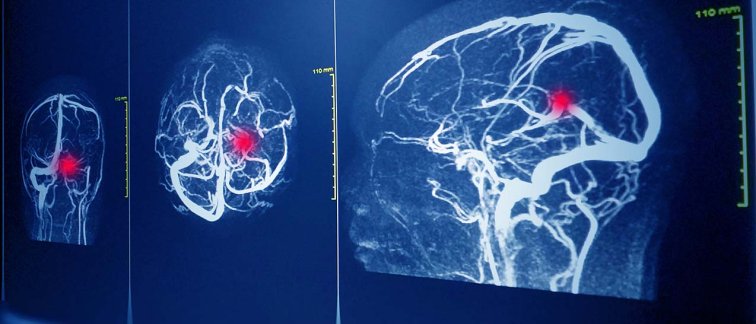Patients with subarachnoid hemorrhage can experience rebleeding from the ruptured aneurysm, that increases the risk of poor clinical outcome. Short-term antifibrinolytic therapy with tranexamic acid (TXA) has been shown to reduce the risk of rebleeding. The ULTRA investigators investigated whether ultra-early, short-term treatment with tranexamic acid improves clinical outcome at six months.
René Post: “The use of TXA in patients who have endured a subarachnoid hemorrhage has been a matter of debate for decades and dates back to as far as the 1970s.”
With the study of Post and his colleagues, that started in 2013, it can now be demonstrate that TXA does not improve the clinical outcome in these patients at six months’ follow-up.
Large scale RCT
In the randomized controlled trial adult patients with spontaneous CT-proven subarachnoid hemorrhage in eight treatment centers and sixteen referring hospitals in the Netherlands were randomly assigned to treatment with tranexamic acid in addition to care as usual (tranexamic acid group) or care as usual only (control group). Between the period of July 2013 and July 2019 955 patients were enrolled. The result of the study includes that in patients with CT-proven subarachnoid hemorrhage, presumably caused by a ruptured aneurysm, ultra-early, short-term tranexamic acid treatment did not improve clinical outcome at six months.
No rebleedings
Post: “What surprised us was that we did not find a significant reduction in the occurrence of rebleedings between the treatment groups, whereas this was always said to be the main reason for its use, namely, to prevent recurrent bleedings. We think the possible explanation of this rather unexpected finding is two-fold. Firstly, current guidelines nowadays advise treatment of the ruptured aneurysm as soon as feasible, preferably within 24-72 hours. However, treatment of patients with subarachnoid hemorrhage has changed over the years, resulting in increasingly shorter times to aneurysm treatment. Our study showed that in half of the patients the aneurysm was secured within 14 hours. This early aneurysm treatment shortens the time-window in which a rebleeding can occur, and thus the time-window in which TXA can be effective. Secondly, we know that half of the rebleeds occur within three hours. Yet, despite ultra-early initiation of TXA treatment, the reduction of rebleeds was apparently not soon enough in our study to prevent a considerable amount of rebleedings.”
The article by Post et alUltra-early tranexamic acid after subarachnoid haemorrhage (ULTRA): a randomised controlled trial’ is published in The Lancet of January 2021.

